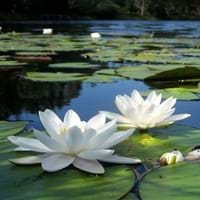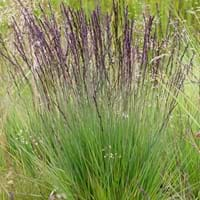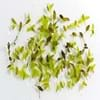Life Span
Perennial
Perennial
Type
Aquatics, Flowering Plants
Grass
Origin
Not Available
Asia, Europe, North Africa
Types
Not Available
purple moor-grass 'Moorhexe', variegated purple moor-grass
Habitat
Ponds
Boggy areas, Dry and Young forest Heaths, Lowland
USDA Hardiness Zone
4-11
4-8
AHS Heat Zone
Not Available
9 - 1
Sunset Zone
Not Available
1a, 1b, 2a, 2b, 3a, 3b, 4, 5, 6, 7, 8, 9, 14, 15, 16, 17
Habit
Spreading
Clump-Forming
Flower Color
White
Dark Purple
Flower Color Modifier
Bicolor
Bicolor
Fruit Color
Non Fruiting Plant
Non Fruiting Plant
Leaf Color in Spring
Light Green
Green, Dark Green
Leaf Color in Summer
Light Green
Light Green
Leaf Color in Fall
Green
Green, Yellow green, Gold
Leaf Color in Winter
Green
Tan
Leaf Shape
Round
Needle like
Plant Season
Early Summer, Late Summer
Spring, Summer, Fall, Winter
Sunlight
Partial Sun
Full Sun, Partial Sun
Growth Rate
Medium
Medium
Type of Soil
Aquatic Plant
Clay, Loam, Sand
The pH of Soil
Aquatic Plant
Acidic, Neutral
Soil Drainage
Average
Average
Bloom Time
Early Summer, Late Summer
Late Spring, Summer, Late Summer, Early Fall, Fall
Tolerances
waterlogging
Not Available
Where to Plant?
In Water
Ground, Pot
How to Plant?
Stem Planting
Divison, Transplanting, Vegetative Reproduction
Plant Maintenance
Medium
Low
Watering Requirements
Plant grows in water
Requires regular watering, Water more frequently during periods of extreme drought
In Summer
Aquatic Plant
Lots of watering
In Spring
Aquatic Plant
Moderate
In Winter
Aquatic Plant
Average Water
Soil pH
Aquatic Plant
Acidic, Neutral
Soil Type
Not Applicable
Clay, Loam, Sand
Soil Drainage Capacity
Aquatic Plant
Average
Sun Exposure
Partial Sun
Full Sun, Partial Sun
Pruning
No need to prune
Prune in winter, Remove damaged leaves, Remove dead branches, Remove dead leaves
Fertilizers
Fertilize the first year
No need to fertilize every year
Pests and Diseases
Leaf eating pests, Sap-Sucking Insects, Stem rot
Pests and diseases free
Plant Tolerance
waterlogging
Not Available
Flower Petal Number
Single
Single
Foliage Texture
Fine
Fine
Foliage Sheen
Matte
Matte
Attracts
Fishes
Not Available
Allergy
Not Available
Not Available
Aesthetic Uses
Showy Purposes, Water gardening
Showy Purposes, Water gardening
Beauty Benefits
Good for skin, Moisturizing, Weightloss
Not Available
Environmental Uses
Not Available
No fertilizer, pesticides, or herbicides needed
Medicinal Uses
Antibacterial, Anti-fungal, anti-inflammatory, Antioxidants, Astringent, Clears heat, Combats Stress, Detoxification, Diabetes, High cholestrol, Improve heart health, Liver problems, Low Blood Pressure, Phosphorus, Rich in Iron, Vitamin B, Vitamin C
No Medicinal Use
Part of Plant Used
Leaves, Root, Stem
Whole plant
Other Uses
Can be made into a herbal tea, Culinary use, Used as Ornamental plant, Used in herbal medicines
Used as Ornamental plant
Used As Indoor Plant
Yes
No
Used As Outdoor Plant
Yes
Yes
Garden Design
Bog Garden, Water Gardens
Container, Foundation, Mixed Border
Botanical Name
Nymphaea lotus
Molinia caerulea
Common Name
white Egyptian lotus, tiger lotus, white lotus or Egyptian white water-lily
purple moor-grass
In Hindi
सफेद कमल
बैंगनी दलदल घास
In German
Tigerlotus
Pfeifengras
In French
Lotier d'Égypte, Lotus tigré
pourpre lande-grass
In Spanish
loto tigre, nenúfar blanco egipcio
púrpura amarra-hierba
In Greek
λευκό λωτού
μωβ Moor-γρασίδι
In Portuguese
nenúfar-branco, lótus-branco, lótus-do-egipto, loto-sagrado-do-egito e lótus-sagrado-do-egito
purple moor-grass
In Polish
białego lotosu
fioletowy Moor-trawa
In Latin
albus Lotus
Maurus herba-purpura,
Phylum
Magnoliophyta
Magnoliophyta
Class
Magnoliopsida
Liliopsida
Order
Nymphaeales
Cyperales
Family
Nymphaeaceae
Poaceae
Clade
Angiosperms
Angiosperms, Commelinids, Monocots
Tribe
Not Available
Not Available
Subfamily
Not Available
Not Available
Number of Species
Not Available
Not Available
Importance of White Lotus and Molinia Caerulea
Want to have the most appropriate plant for your garden? You might want to know the importance of White Lotus and Molinia Caerulea. Basically, these two plants vary in many aspects. Compare White Lotus and Molinia Caerulea as they differ in many characteristics such as their life, care, benefits, facts, etc. Every gardener must at least have the slightest clue about the plants he wants to plant in his garden. Compare their benefits, which differ in many ways like facts and uses. The medicinal use of White Lotus is Antibacterial, Anti-fungal, anti-inflammatory, Antioxidants, Astringent, Clears heat, Combats Stress, Detoxification, Diabetes, High cholestrol, Improve heart health, Liver problems, Low Blood Pressure, Phosphorus, Rich in Iron, Vitamin B and Vitamin C whereas of Molinia Caerulea is No Medicinal Use. White Lotus has beauty benefits as follows: Good for skin, Moisturizing and Weightloss while Molinia Caerulea has beauty benefits as follows: Good for skin, Moisturizing and Weightloss.
Compare Facts of White Lotus vs Molinia Caerulea
How to choose the best garden plant for your garden depending upon its facts? Here garden plant comparison will help you to solve this query. Compare the facts of White Lotus vs Molinia Caerulea and know which one to choose. As garden plants have benefits and other uses, allergy is also a major drawback of plants for some people. Allergic reactions of White Lotus are Not Available whereas of Molinia Caerulea have Not Available respectively. Having a fruit bearing plant in your garden can be a plus point of your garden. White Lotus has showy fruits and Molinia Caerulea has showy fruits. Also White Lotus is not flowering and Molinia Caerulea is not flowering . You can compare White Lotus and Molinia Caerulea facts and facts of other plants too.





